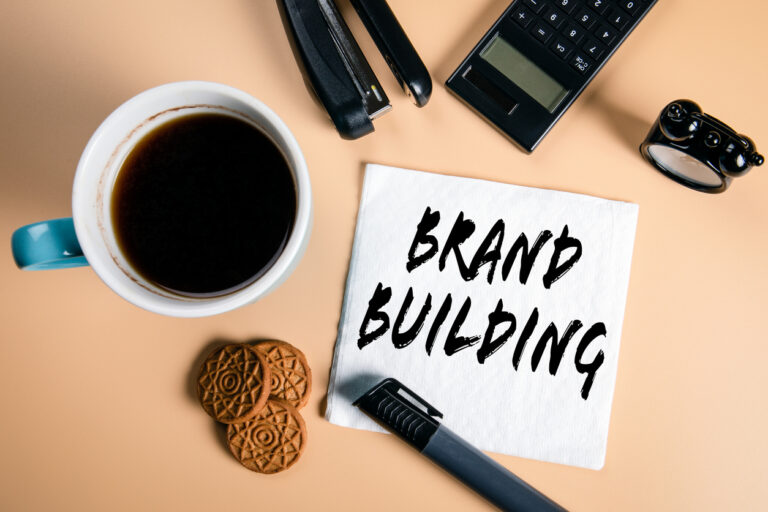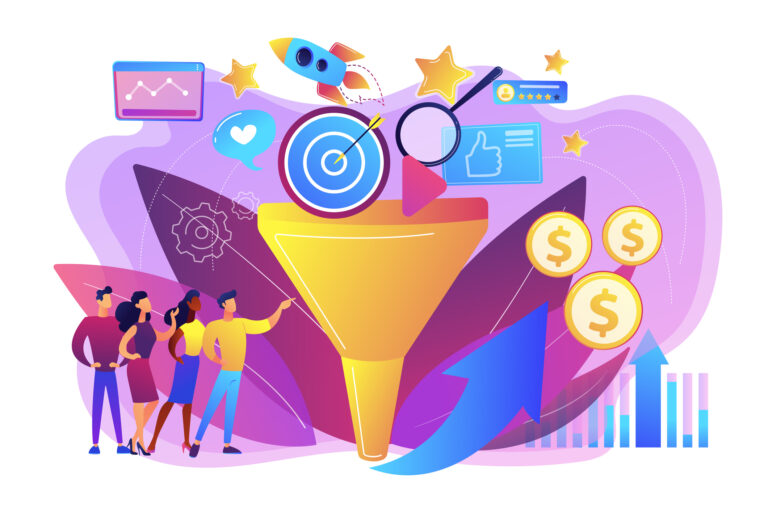Branding is the single most discussed component of the modern marketing arsenal. Presenting a “brand” consistently across platforms boosts bottom-line revenue by 33 percent, 77 percent of people make purchases based on brand name — not product or service quality. And Walker’s prophetic prediction that brand would overtake price and product as the key differentiator by 2020 has certainly come true; 89 percent of companies now compete primarily on customer experiences and branding.
But buried between nuggets of statistics and dime-a-dozen blogs, something has been lost. Branding has quickly become associated with logos, in-office coffee shops (because we’re cool and hip and never want our employees to ever leave the office… EVER), and big, expensive marketing campaigns. In other words, branding is often equated with fluidity, as though it’s something you can simply change at any time, like a pair of sneakers.
In fact, many companies spend significant revenue “creating” their brands, often stripping down their identities during intense brainstorming sessions. You choose a brand that mimics leaders in other industries, despite the fact that the buyer they serve shares no common interests with yours. Or, worse yet, brands become monoliths of the CEO’s personality or a Frankenstein creation made by outsourced agencies, brand hackers, and consultants.
Here’s the problem: your brand isn’t malleable. It just… is. You have a brand. And any brand-driven marketing efforts should be obsessed with spreading that brand: not creating it.
Brand Building is Storytelling Driven by Your Business DNA
“If marketing ‘comes up’ with a ‘purpose,’ it is by definition not purposeful, not ingrained, not authentic.” — Björn Annwall, Head of EMEA, Volvo
When clients come to us for branding services, the first thing we do is help them discover their brand. Notice: we used the word discover — not create. To be honest, it can be difficult to pinpoint the specifics of a brand. It’s a semi-intangible force that guides every decision, creation, and execution in your company. Putting those abstract missions, values, voices, and identities down into words isn’t always easy, but it’s crucial.
Eighty-six percent of people believe authenticity is a key consideration when making a purchase, and 81 percent of people say they need to trust a brand before making a purchase. Trust and authenticity are driven by effective branding. But only if that brand is true to your business.
Marketing isn’t supposed to create your brand, or even influence its values or mission statements to “better align with the target audience.” Instead, marketing should tell the story of your brand in a way that’s authentic, value-driven, and impactful to your users.
According to McKinsey research, purpose-driven brands backed by authenticity and powerful storytelling see twice the brand-value growth of brands that focus solely on profit-generation from their branding efforts.
In other words, branding is largely story-driven, and it shouldn’t be used as a marketing “tool” to score quick leads. And any marketing strategies surrounding your brand should be entrenched in hyper-effective storytelling techniques. People remember stories 22x better than facts, and 62 percent of B2B marketers use storytelling to effectively convert leads.
So, instead of thinking of branding as this color-driven, logo-centric marketing methodology, start thinking about it as a way to effectively tell the story of your brand. Remember, that story already exists. It just needs a little nudge and some magic to start impacting the decision-makers with your product/service on their shortlist.
Why is Branding So Important?
“Today’s most iconic brands are not, or at least not exclusively, consumer brands.” — McKinsey
McKinsey data shows the top 40 brands (measured by brand value) see twice the total return for investors. To be clear, branding is the single most important tool in your arsenal. It helps you connect to people on a deep, emotional level. And it creates trust in today’s digitally-soaked purchasing ecosystem drenched in competition. Customers have nearly unlimited choices at their fingertips. In fact, 75 percent of brands changed their brands during the pandemic.
Your brand is a shield. It prevents buyers from flooding to alternative options at the first sign of friction. So, there’s a reason that strong brands outperform their competitors by 73 percent. Conversions are great. Revenue is fantastic. But branding goes far beyond cash. It drives long-term value, consistency, performance, and authenticity into the heart of your business.
Examples aren’t hard to find. Salesforce, Dropbox, Atlassian, Microsoft, Zoom, Slack, and Calendly are the first names that come to mind in their particular field. And it’s not always because they deliver a superior product. And it certainly isn’t because they came first. Branding is almost magic. It’s tangible, intangible, mission-driven, value-rich, and incredibly powerful.
The Role of Marketing in the Brand-building Process
“Brands can exist as long as they can transfer their strategies to the market in a consistent, continuous, and coherent manner.” — Deloitte
Alright. So, we’ve established that your brand is something that exists deep in the DNA of your business. So… what exactly does marketing do for your brand? Or, to put it another way, how can you leverage marketing to spread your brand in a way that resonates with users, accurately conveys values, and builds emotional connections that stand the test of time, market conditions, and economic turmoil?
In our eyes, branding (i.e., marketing-driven brand-building practices) involves four primary layers:
- Storytelling
- Consistency
- Content
- Authenticity
1. Storytelling
“Storytelling is one of the most powerful ways we have as human beings to impart information. It is primal within us. We live to tell stories; we live to hear stories.” — Andrew Lam-Po-Tang, former CIO and CTO of Fairfax Media
As we mentioned above, storytelling is a vital component of branding. In effect, brand building is storytelling. You’re telling the story of your brand. Or, as McKinsey puts it, storytelling invokes the strengths of both the “integrated consumer” and “business experiences.” How can you tell your story in a digestible format in the places where it matters most?
We won’t spend too much time discussing the creative or data-driven components of storytelling. That’s a… story…. for another time. But it’s important to understand that storytelling involves both how you convey your brand and where you convey your brand. Choosing the right creatives and storytelling devices is just as important as picking the right channels and choosing the correct audience.
2. Consistency
“Sustaining an audience is hard. It demands a consistency of thought, of purpose, and of action over a long period of time.” — Bruce Springsteen
To succeed at branding, you absolutely must have brand consistency. If customers, partners, employees, c-level, investors, and stakeholders all find different experiences, you have a problem. Worse yet, some companies have inconsistent experiences across each channel. Customers may experience a brand differently on one social media channel vs. another.
You can imagine how this would present tangible problems. Consistent branding across channels boosts bottom-line revenue by 33 percent for a reason: brands are supposed to be pure and authentic. Marketing needs to ensure your brand consistently resonates across every channel, every experience, and every touchpoint.
3. Content
“We don’t wring our hands over short-term clicks and views for any individual piece of content. Instead, we focus on our overall share of voice in our market and on being true to our core messaging.” — Janine Pelosi, CMO at Zoom
Most of us know how valuable content marketing is in today’s digital tsunami. Yet, despite +70 percent of marketers actively investing in content, a mere 37 percent actually have a documented strategy, and 32 percent admit their content creation is poor. When it comes to branding, nothing beats content. And this shouldn’t be too surprising. Branding with ads or paid placements isn’t nearly as impactful as storytelling through engaging, meaningful, helpful, and organic content. Again, this comes back to trust, reliability, and authenticity.
Zoom has hundreds of blog posts. Salesforce has thousands. Consumers don’t have to pay to access them or have them shoved down their throats through overly pervasive pixel-based ads. They find them organically. And they use them to answer questions, learn, and think. In fact, that’s the most powerful part of content; it allows humans to be humans. They can make their own decision. Branding isn’t about “convincing.” Instead, it involves laying the soul of your company bare on the table — allowing people to form their own opinions, organically engage with you, and thoughtfully connect with you in a space free of paid annoyances.
Here’s my favorite way to put it: content is the secret sauce that converts the 82 percent of people that ignore ads. Not only does organic content help you find the right people; it helps the right people find you. After all, what’s the point of a quick conversion based on a paid click if the company churns in a month?
Ask yourself a question. When is the last time you bought a product or service from an ad? Alright. Now, when is the last time you purchased a product or services after watching a video, reading a “vs” blog post, or watching a webinar? Chances are, that content converted you. And there’s an even better chance the content you consumed helped you understand the values, structure, and experiences of a brand. In fact, the brand may be what caused you to pull the trigger in the end.
4. Authenticity
“As marketers, we build community by creating personal, authentic connections with our customers.” — Sarah Franklin, CMO at Salesforce
The final (and most important) component of branding is authenticity. How can you tell a story that’s truly authentic to your brand? This is the sole reason I wrote this post. Many companies create non-authentic, copycat brands. Yes. Apple is massively successful. No. Every company doesn’t need a minimalist, white-soaked website. And yes. Salesforce is incredibly successful. But you don’t need to copy their tone, voice, or marketing style. Your brand has to be a reflection of your company. Otherwise, you end up as an empty husk. And your customers can feel that.
Are You Ready to Start Branding Effectively?
Make no mistake: branding is usually the difference between growth and shrinkage. It’s the powerhouse of your marketing arsenal. But to start creating a compelling brand, you need to understand your company, express your visions, and create consistent, authentic content. Need some help?
Are You Ready To Get Started on Branding?
Are you a B2B software brand looking for a specialized agency that keeps its client list small and focused? We create specialized strategies aligned to your business needs, and we’re ready to help you create a strategy to help your software stand out this year.






